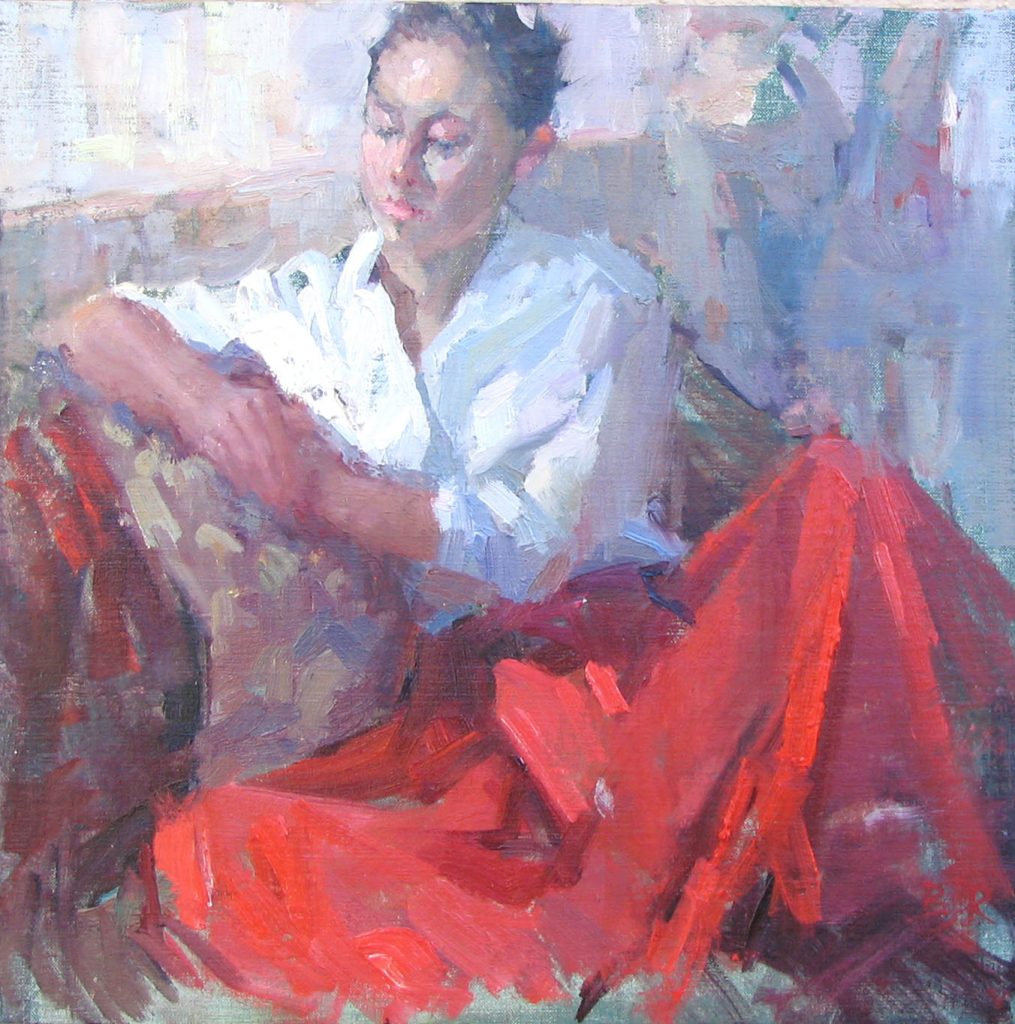Artists Use This Technique to Direct the Viewer's Eye
What technique to artist used to direct the viewers Eye. Ive mentioned it a couple of times so far but havent actually shown you how to do it.

Jim Zuckerman On Composition Leading Lines Scenic Photography Beautiful Places To Visit Most Beautiful Gardens
20 Commonly Used Advertising Techniques.

. Rule of Thirds and The Golden Mean. Unifies a work of art and controls the amount of attention a viewer gives to each part. A horizontal line that runs across a page or canvas that represents the viewers eye-level or to represent where the sky meets the ground.
That is one of the tools artists use to organize the artistic elements in a work of art. The focal point isnt just wherever the eye chooses to see. William Clarke Rices October.
The viewers eye is automatically drawn to this pop of color. Makes one part of a work dominant over other parts. This extends back down to the end of her arm.
Motion or movement is considered to be one of the principles of art. Not one of the two major types of visual emphasis. You can use leading lines a photography term applicable to painting to direct the viewers eye into and around the painting.
Leading lines can be actual lines such as the lines of a fence or railroad or they can be implied lines such as a row of trees or curve of stones or circles. In this article we will explain 5 fundamental skills that every artist should master. Controlling the brightness of various parts of your image is one of the most powerful ways to control the viewers eye.
This can be done as light on dark surroundings dark on light surroundings or simply by ensuring the dominant colours of the main subject contrast with the. After the artist has manipulated the viewer they reward them using some or all of the these. In paintings we dont want the eye to just choose to see what it wants to look for.
The figures are deliberately placed to direct the viewers eye from the front right of the picture to the buildings front edge on the left which like a ships bow acts as a. In this activity students will investigate the use of sight lines to direct the viewers eye. Artists use this technique to direct the viewers eye to a specific place.
On the contrary its the painters responsibility to direct the eye to orchestrate its movement within the painting through the usage of linear paths. Also giving some elements the ability to be moved or move on their own via internal or external power. Artists commonly imply compositional line through the figures line of sight to direct the viewers attention.
Using art elements to direct a viewers eye along a path through the artwork andor to show movement action and direction. In my photo below Ive used the eye-line of the model to reach the end of the breakwater. This helped to direct the viewers eye to the more important parts of the painting.
Balance and symmetry in a shot can be very effective. The opposite of blending. Manet used heavier applications of oil paint on his main subject and thinner layers in the background and in less significant areas.
The artists composition however is more complex than just his use of perspective. Past films have done this well. Like storytellers artists can use similar tricks to help them produce more compelling artwork.
One might argue that all worthy works of art employ emphasis. Artists must use tricks to fool the viewers eye so as to create the illusion of the third dimension ie. This is known as Trompe loeil and is achieved using tools like value shading colour and contour lines.
Much study has been done into what visual elements draw our attention which is super helpful for those of us that create visual art. The actual colour of something. Having students view the following magazine cover-illustration from The Smithsonian American Art Museum.
An artist may for instance use red on the subject while leaving the rest of the painting in very muted browns. Motion is employed in both static and in time-based mediums and can show a direct action or the intended path for the viewer s eye to follow through a piece. This is another great technique at your disposal.
A perfect example of this is da Vincis Last Supper. If a piece lacks this principle it may seem monotonous and boring to the eye. Often referred to as a colour but hue is more.
Consider these examples from Stanley Kubricks best movies. Heres how to use the eye-line as a photographic element. Lets take a look.
And leading the eye to the center of the screen might end up serving your story better and garner more emotion. In drawing and painting form can only be implied because they are 2-dimesional flat media. The most important aspect of art to me personally is the composition.
A painting technique where the transitions between colours are abrupt. Artists use this technique to direct the viewers eye. Use Colour or Tone Contrast In a similar way to using light to brightly light the main subject simply making sure that the subject contrasts with its surroundings can also be an effective way to draw the eye to it.
A form that is suggested rather than explicitly delineated and that is used by artists to structure compositions and direct the viewers eye to particular element in an artwork is called. You can use this to your advantage in a couple of ways.

3 Simple Techniques To Create Eye Movement In Your Artwork

Woman Face One Line Drawing Abstract Simple Minimalist Art Beauty Fashion Illustration Print Prin Beauty Drawings Female Face Drawing Line Drawing

No comments for "Artists Use This Technique to Direct the Viewer's Eye"
Post a Comment